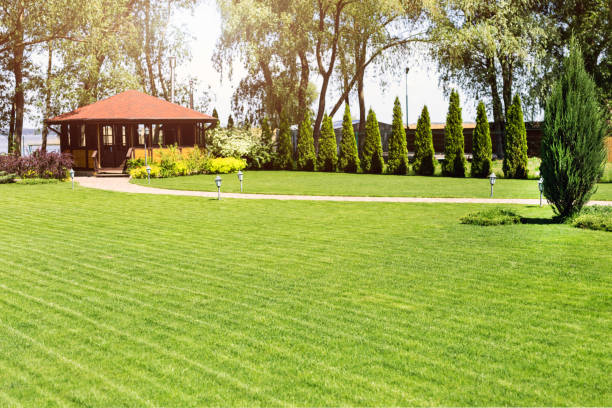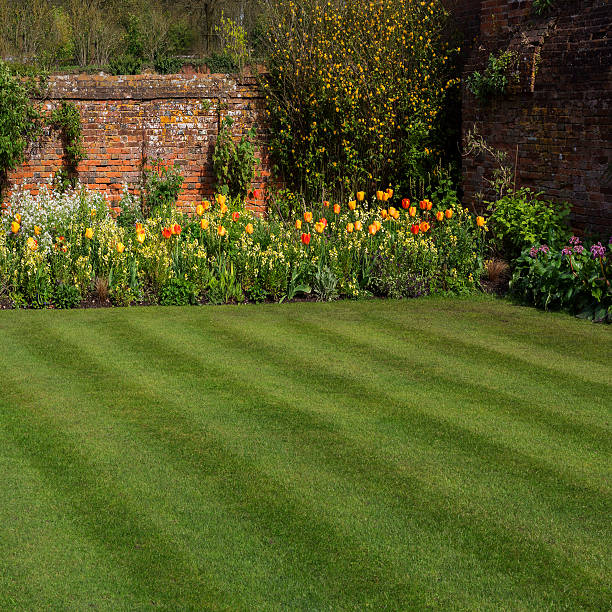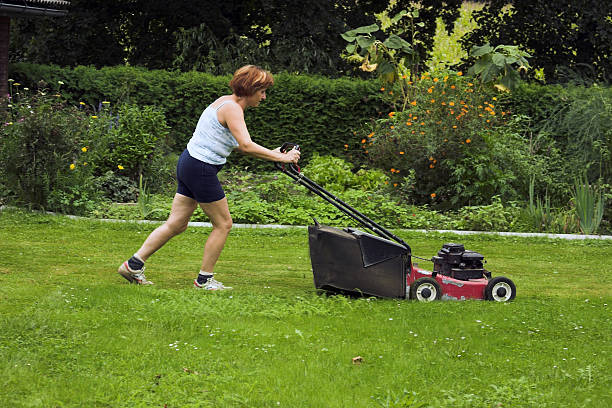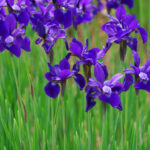Mowing the lawn is one of the most common and essential tasks in maintaining a beautiful and healthy landscape. While it might seem Like a simple, routine activity, proper mowing requires understanding techniques, timing, and lawn care essentials. This task when done correctly, promotes the health and appearance of the grass, encourages thicker growth, and reduces weeds. For homeowners and gardening enthusiasts, mowing the lawn is both a responsibility and an opportunity to improve the curb appeal of their property. In this article, we will dive into the history of lawn mowing, its benefits, best practices, tools, techniques, and how to ensure a thriving lawn through proper mowing.




1. The History of Lawn Mowing
The Concept of the Lawn as we know it today has its roots in European aristocracy. During the 17th and 18th centuries, large, expansive lawns symbolized wealth and status, as they required extensive maintenance that only the affluent could afford. Before the invention of modern tools, these lawns were often managed by grazing animals or labor-intensive scything.
The invention of the lawnmower in the 19th century revolutionized lawn care. Edwin Budding, an English engineer, is credited with creating the first mechanical lawnmower in 1830. His invention, inspired by machines used to trim cloth, allowed for more precise cutting of grass and gave rise to the popularity of well-manicured lawns, particularly in the growing suburban neighborhoods of the 20th century. As technology progressed, motorized lawnmowers made the task even more accessible, allowing homeowners across the world to achieve the perfect lawn.
2. Why Mow the Lawn?
Mowing the lawn is not just about aesthetics; it plays a vital role in the health and sustainability of the grass. Regular mowing keeps the lawn neat, encourages healthy growth, and prevents weeds and pests from taking over.
a. Grass Health and Growth
Mowing the lawn regularly helps to promote dense and healthy growth. Cutting the grass stimulates the roots to spread, leading to a thicker lawn that is more resistant to drought, disease, and weeds. When grass blades are cut, they respond by growing more robustly, creating a stronger lawn that can outcompete weeds and other unwanted plants.
b. Pest and Weed Control
Mowing the lawn helps control weeds and pests by maintaining a consistent height and removing the seed heads of weeds before they can spread. Overgrown lawns provide a habitat for pests such as insects and rodents, which can damage the grass and surrounding plants. Regular mowing prevents the lawn from becoming a haven for these pests.
c. Improved Aesthetics and Property Value
A well-manicured lawn improves the overall appearance of a property. Clean, even grass lines and a uniformly cut lawn give the landscape a polished look. This enhances the curb appeal of a home and can even increase property value, as potential buyers are more attracted to properties with well-maintained outdoor spaces.
d. Safety
Overgrown grass can become a tripping hazard, particularly in areas where children or pets play. By keeping the lawn neatly trimmed, homeowners can reduce the risk of falls and accidents. Additionally, mowing prevents the growth of hiding spots for snakes or insects that could pose a danger to humans and pets.
3. Best Practices for Mowing the Lawn
To achieve the best results when mowing the lawn, it’s important to follow a few key principles. These include mowing at the correct height, using sharp blades, and adjusting mowing frequency based on the season and weather conditions.
a. Mowing Height
One of the most critical aspects of mowing the lawn is cutting the grass to the appropriate height. Different types of grass have different optimal mowing heights, but as a general rule, it’s best to follow the “one-third rule”: never remove more than one-third of the grass blade in a single mowing. Cutting too much at once can stress the grass, making it more susceptible to disease and pests.
- Cool-Season Grasses: For grasses like Kentucky bluegrass or fescue, which grow best in cooler climates, it’s recommended to mow at a height of 2.5 to 3.5 inches. Taller grass helps shade the soil, retain moisture, and prevent weeds from growing.
- Warm-Season Grasses: For grasses like Bermuda or Zoysia, which thrive in warmer climates, mowing heights of 1.5 to 2.5 inches are more appropriate. These grasses tend to be more drought-tolerant and can handle shorter cuts.
b. Frequency of Mowing
The frequency of mowing depends on the season, weather, and grass growth rate. During the active growing season, lawns may need to be mowed once a week or more, while in cooler months or during droughts, mowing can be less frequent.
- Spring and Summer: In spring and early summer, grass grows rapidly due to warm temperatures and frequent rain, requiring more frequent mowing. It’s best to mow the lawn weekly during these seasons.
- Fall: As temperatures cool in the fall, the growth rate of the grass slows down, and mowing can be done less frequently. However, it’s important to keep the grass at an optimal height going into the winter.
- Winter: In many regions, grass goes dormant in the winter, and mowing is unnecessary. However, for homeowners in warmer climates with grasses that remain active year-round, occasional mowing may still be required.
c. Mowing Techniques
Proper mowing techniques not only ensure an even cut but also protect the health of the lawn.
- Alternate Mowing Patterns: Mowing the lawn in different directions each time helps prevent soil compaction and encourages grass to grow upright. Alternating patterns also reduce the chances of developing ruts from the mower wheels.
- Overlap Each Pass: When mowing, overlap each pass slightly to avoid leaving uncut strips of grass. This ensures a uniform cut and prevents the need for double mowing.
- Grass Clippings: It’s often beneficial to leave grass clippings on the lawn after mowing, a practice known as “grasscycling.” Clippings decompose quickly and return valuable nutrients, such as nitrogen, to the soil, reducing the need for fertilizers.
d. Sharp Blades and Lawn Mower Maintenance
The condition of the lawnmower and its blades can significantly impact the quality of the mow. Dull blades tear the grass instead of cutting it cleanly, which can cause stress, making the lawn more susceptible to disease and browning.
- Blade Sharpening: Sharpening lawnmower blades at least twice a year ensures a clean cut. Dull blades can leave jagged edges on the grass, which not only looks unattractive but also makes the lawn more vulnerable to diseases.
- Mower Height Adjustment: Most lawnmowers allow you to adjust the height of the cut. It’s essential to adjust the mower height according to the type of grass and the season to avoid cutting too low or too high.
- Mower Maintenance: Regular maintenance, including oil changes, air filter replacements, and spark plug checks, will keep the mower running efficiently and prolong its lifespan.
4. Types of Lawn Mowers
Choosing the right lawnmower is crucial for achieving the best results. There are several types of mowers available, each suited to different lawn sizes and conditions.
a. Push Lawn Mowers
Push lawnmowers are manual or powered by gasoline or electricity. They are ideal for small to medium-sized lawns and are more environmentally friendly if you opt for a manual reel mower.
- Manual Reel Mowers: These are human-powered mowers that use a cylindrical blade to cut the grass. They are eco-friendly and quiet but require more effort than motorized mowers.
- Electric or Gas-Powered Mowers: Electric mowers are available in corded and cordless models, offering a quieter and cleaner alternative to gas mowers. Gas mowers are more powerful and better suited for large lawns or thick grass but require regular maintenance.
b. Riding Lawn Mowers
Riding lawn mowers are ideal for large lawns or properties with uneven terrain. These mowers allow the operator to sit while mowing, making the task easier and faster.
- Tractor Mowers: These are heavy-duty mowers designed for large properties. They can handle a wide range of terrain and come with attachments for additional lawn care tasks like aerating and dethatching.
- Zero-Turn Mowers: Known for their maneuverability, zero-turn mowers are perfect for navigating around obstacles like trees, flower beds, or fences.
c. Robotic Mowers
Robotic lawnmowers are the latest innovation in lawn care. These autonomous machines can be programmed to mow the lawn on a schedule and require minimal supervision. While they are more expensive, they offer convenience and a hands-off approach to lawn mowing.
5. Common Lawn Mowing Mistakes and How to Avoid Them
Even with the best intentions, it’s easy to make mistakes when mowing the lawn. Avoiding these common errors will help ensure a healthy and attractive lawn:
- Cutting Too Short: Also known as “scalping,” cutting the grass too short weakens the root system and makes the lawn more vulnerable to weeds and drought. Stick to the one-third rule and adjust the mower height according to the grass type.
- Mowing Wet Grass: Wet grass tends to clump together, which can clog the mower and result in uneven cutting. It’s best to wait until the grass is dry before mowing.
- Not Changing Mowing Patterns: Mowing in the same direction each time can cause ruts and compaction, which affects the grass’s health. Change the mowing direction regularly to encourage even growth.
6. Sustainability and Lawn Mowing
Lawn care significantly impacts the environment, from water usage to fuel emissions. Homeowners can make their mowing practices more sustainable by choosing eco-friendly lawnmowers, grasscycling, and reducing the frequency of mowing during







